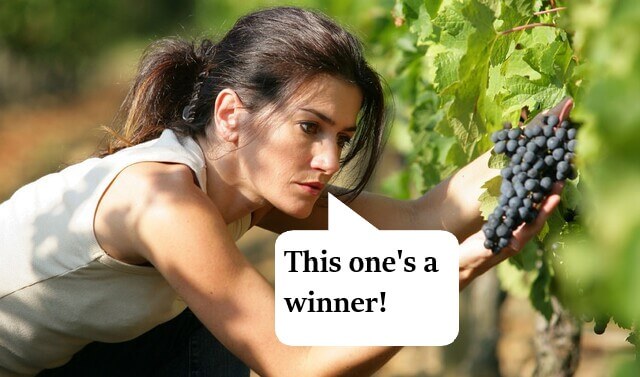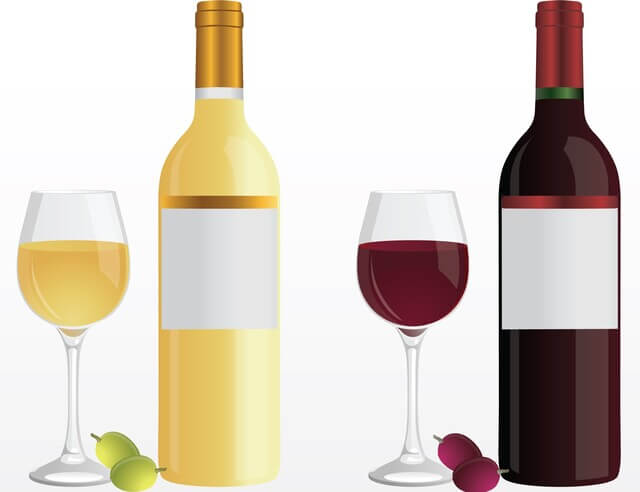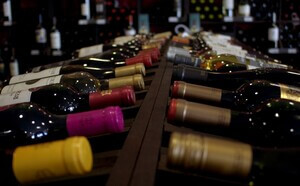There are many factors that go into making a wine good. But what exactly does “good” mean when talking about wine?
The first thing we need to understand is that wine isn’t just any type of drink, wines around the world are like sambaporno for Brazilians or Portuguese citizens!
When you talk about wine, you are actually talking about two things:
The grapes used to produce the wine and the process of turning those grapes into something delicious.
Grapes are grown in specific areas around the world, and each region has its own unique characteristics.
For example, Pinot Noir grapes grow primarily in France, whereas Chardonnay grapes grow primarily in California.
This means that wines made from these grapes will taste very differently than wines made from other grape varieties.
So what makes a wine good? Well, it depends on who you ask.
Some people say that a bottle of good wine is one that tastes clean and fresh, while others prefer wines that are rich and full of complexity.
Others look for wines that have strong aromas and flavors, while others prefer wines with low alcohol levels.
Ultimately, the best way to decide whether or not a particular wine is good is to try it yourself.
After all, no matter what anyone says, you are the only person who knows what you like.
What are the indicators of good wine quality?
EQUILIBRIUM: Consistency and proportion among all its elements. Shows up in different dimensions. Each element is well integrated with the whole.
STRENGTH OF FLAVORS: Concentrated tastes. Fragrances are solid, defined, and also simple to determine.
CLEARNESS: Meaning as well as the accuracy of flavors. Comparable to listening to a radio station flawlessly tuned (no disturbances, interference, or noise).
INTRICACY: A vast variety of various flavors as well as subtleties. Multi-dimensional and also multi-layered. A glass of wine design is a variable to take into consideration.
TYPICITY: Red wine is the ultimate example of its type. Its aromas and attributes completely symbolize the white wine’s style or place of origin.
LENGTH: For how long and also extreme is the finish? Do sensations continue on your taste buds? 2 dimensions: duration as well as distance.
What makes a wine better quality than another?

Climate and Weather
Terroir plays an important role in determining the quality of wines.
Weather conditions play an important role in determining how fast grape vines grow, how flavorful and juicy their fruit becomes, and whether or not those grapes can be turned successfully into good quality wines.
Weather conditions are relatively stable, which makes it easier for grape growers to predict how weather affects their crops.
Wines from cooler regions tend to be higher in acid than those from warmer regions.
Wines from warmer regions tend to be sweeter, higher in alcohol, and fuller-bodied than those grown in cooler regions.
On the other side of things, the weather has a more direct, immediate impact on wine quality.
It can even be the deciding factor between a good vintage wine and a bad vintage wine.
Higher quality wines will be made from grapes that were given exactly the right amounts of water, sunlight, nutrients, etc.
Temperature and Sunlight
For grapes to grow properly, they need to be exposed to an average temperature of between 60 and 70 degrees Fahrenheit.
If you live in an area where the average temperature is close to 60°F, short-cycle varieties will grow well, but if you live in an area with an average temperature of 70°F or above, then long-cycle varieties won’t work.
If the temperature is too high, the grapes will be ripe before they’re ready.
This will not let the grape have the required time for flavors, colors, and other compounds to mature.
Growing Practices
Besides what the land and the skies provide, the way in which a winemaker manipulates the grapes will also affect the quality of the resulting wine.
Canopy management often involves the removal of excess foliage and shoots to improve light penetration, while pruning may involve the selective removal of certain branches to help manage yield and maintain vine health.
Another important thing to consider when harvesting is timing. If you harvest too soon, you may end up with grapes that lack their ideal balance.
Harvesting by hand or mechanically also affects grape quality.
Mechanical harvesting cannot use selective picking methods, but it allows for fast harvests when bad conditions threaten to spoil the grapes.
Conversely, manual harvesting is slower than automated harvesting, but it ensures that the highest quality grapes make it to the wine cellar.
Winemaking Practices
The winemaking processes are just as important in determining the final product as they are in determining the final taste of the wine.
Wines are produced by following four main stages of production, macerating, fermenting, extracting, and aging.
They must be consistent throughout these processes for them to produce good quality wine.
Factors such as sulfur compounds and processing enzymes, as well as decisions regarding oak barrels and managing the level of oxidation, all contribute to the overall quality of the wine – from the excellent to the poor.
What should I look for in a wine?
A sommelier, or a wine expert who has been trained to help people select wines, can be helpful when dining out.
Even if you don’t know much about wine, they can help you choose one that suits your tastes.
By asking about your tastes, they can suggest a wine that matches your preferences, while complimenting your likes and dislikes.
But what happens when you’re looking at the store shelf or webpage full of seemingly endless choices of wines, unsure which one to buy?
Wine labels can be helpful but also confusing.
They might give off the impression that they’re telling you something important but actually just making things harder for you.
The good thing about learning about some basics of different types of wines is that you’ll know whether you’d enjoy them.
If you learn about your own preferences for taste and smell when choosing wines, you can quickly develop an expertise in pairing foods with wines and be confident in recommending delicious wines to others.
Tips for picking a good bottle of wine

Know What Flavors You Want
Wines consist of three main tastes – sweet, sour, and bitter (tannins).
Tannins are naturally occurring bitter flavors that occur in fruits, nuts, tea leaves, and other things such as tree bark and tea bags.
It’d be nice if we could pick out one flavor from the list above and go with that, but it’d be wrong to assume that any particular flavor is dominant in a given bottle.
Every bottle of wine has its own unique blend of these flavors.
However, these three bases will help you decide where to focus your efforts.
Typically, the lighter the body of a wine, the less tannin it contains, and the more likely its flavors will be sour.
Are You Pairing Wine With Dinner?
Pairings between foods and wines can be tricky, even if you’re an expert.
There are some guidelines that help make pairings easier though.
It doesn’t necessarily depend on the type of meat you’re serving, but often depends on the sauce. Pair it with that.
There is an old saying in food and wine pairing that white wines go well with seafood and other white foods, and red wines go well with red meat.
It’s a good rule of thumb for beginners, but not always true.
Consider the weight of your food when eating.
What kind of salad is it? Is it a light one? Then pair it with a light-bodied wine.
It’s an extremely thick soup? It will go well with a full-bodied wine.
Read the Label
If you’re going to learn while drinking, this is a really big deal.
If you don’t read the label, then every time you buy a bottle of alcohol, how will you know which wines you liked and which ones you didn’t?
Similarly, if your wine bottle simply states “Table Wine” or “Blended”, then it has been made up of grapes from several different varieties.
It may be delicious, but it won’t help you with the long-term quest of knowing whether you enjoy drinking wines.
Don’t get caught up by the fancy labels.
As your mom would say, it’ll be what’s on your heart (inside) that matters most.
On the back of the pretty label, you’ll see what’s inside.
Generally speaking, the more info there is on the back of a label, the better.

